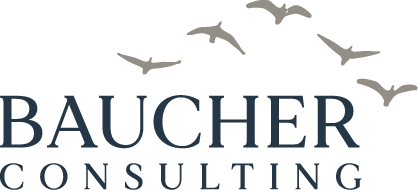
What Government support is available for businesses and self-employed affected by the lockdown?
- What Government support is available for businesses and self-employed affected by the lockdown?
- What is the tax treatment of allowances for employees required to work from home?
Transcript.
With the return to Level Four lockdown, the Government has reactivated its various support mechanisms for businesses and the self-employed. First up is the latest iteration of the Wage Subsidy Scheme. Employers and self-employed can apply for this. Initially, applications are going to be open for two weeks. And as in previous times, this will be run by the Ministry of Social Development, and you apply through their website.
One thing is that the payments are going to be increased. They’re going to be $600 per week per full time employee and $359 per week per part time employee. The criteria will be detailed in full as part of the declaration that’s to be filed when you make your application.
Businesses, organisations and self-employed will be eligible if they experience a 40%[i] drop in revenue over a seven-day period, compared with a typical seven-day period in the six weeks before the increase in alert level. Seasonal businesses need to show a 40% revenue drop compared with a similar week in the previous year.
You need to have been in business for at least six months. Charities, not for profit organisations, the self-employed, as I mentioned, and pre-revenue businesses such as startups may be eligible to apply. Applications for the wage subsidy are available at levels three and four
Starting Tuesday next week applications can be made for a resurgence Support Payment.
The criteria is that they’ve got to show a 30% drop in revenue over a seven-day period after an alert level increase and meet other criteria, including the business must have been in business for at least six months and it must be considered viable and ongoing. When determining income for this payment income such as interest and dividends and all form of residential commercial rent is excluded.
Now, the Resurgence Support Payment is not a loan, it is a subsidy, so it does not have to be repaid. Eligible businesses and organisations can receive the lesser of $1,500 plus $400 per full time equivalent employees, up to a maximum of 50 full time equivalent employees, or four times the actual revenue decline experienced by the business.
Now, the Resurgence Support Payment is actually available at Levels Two and above. So you’ve got a little bit more flexibility around being able to apply for it, depending on what may happen with alert levels around the country.
Then there is the Leave Support Scheme, which enables businesses to pay their workers if they, and this is probably quite relevant right now, particularly in Auckland, have been told by a health official to self-isolate and they cannot work from home, then the business can apply for the Leave Support Scheme. Currently, payments are $585.50 per week per full time workers and $350 per week for part time workers. But from next Tuesday, 24th August, the payment will increase to $600 per week for full time workers and $359 per week for part time workers.
There is also a Short Time Absence Payment. It’s a one-off payment which is eligible for the self-employed. And again, workers need to be unable to work from home and need to miss work because they are being told to isolate and are waiting for Covid-19 tests. Employees or self-employed can apply once in any 30-day period. And the Short Time Absent Absence Payment is available at Levels One and above.
Now, also available, and something which was highly successful last year is the Small Business Cashflow (Loan) Scheme. If you’ve previously applied for this and fully repaid it, you can apply again.
You must show the 30% drop in revenue due to Covid-19 measured over a 14-day period in the past six months, compared with the same 14-day period a year ago. And by the way, if your revenue from the same period a year ago was also affected by Covid-19, you then look at the same 14-day period two years ago, that is in 2019,
The amount which each business can borrow is up to a maximum of $100,000. But basically, it’s $10,000 per business, plus $1,800 per full time equivalent employee. It’s interest free if it’s paid back within two years. Otherwise, an interest rate of 3% will apply for a maximum term of five years and repayments are not required for the first two years. Eligible businesses who may not have applied previously for this can do so now.
As you can see, there’s a fair bit of support available. The Resurgence Support Payment will be managed by Inland Revenue, but the Wage Subsidy Scheme is being managed by Work and Income.
We’ve heard they will be monitoring and checking the applications for the Wage Subsidy and the Resurgence Support Payments more assiduously than may have been the case last time around. So you have been warned. But the key point is, the Government has turned on the taps and support will be available there. So those that are affected and eligible should take the opportunity to apply for support.
Moving on what about allowances for employees required to work from home? Well, this was a matter of some great discussion last year and in response Inland Revenue issued Determinations EE001 and EE002.
The first Determination, EE001, is in relation to reimbursing payments for employees using phones and other telecommunication tools when working from home. This Determination provides at the moment under a de minimis option, $5 per week can be paid as a reimbursing allowance. The payment will be treated as exempt income for the employee and deductible for the employer.
Under Determination, EE002 employers may make payments of up to $15 per week to an employee who is working from home as a result of the lockdowns. Again, that will be treated as exempt income of the employee and is also deductible for the employer. If it’s paid fortnightly, it’ll be $30 per fortnight or $65 if paid monthly. This payment is in recognition of general expenditure such as additional heating costs that an employee required to work from home may incur.
In addition, there’s the ability to make a payment for the cost of furniture and other equipment for use at home. And an employer may either use the safe harbour option where up to $400 may be paid to an employee for furniture and equipment costs and treated as exempt income.
Alternatively, an employer may choose a reimbursement option in which case the amount which may be reimbursed is equal to or less than the deduction that the employee could have had for depreciation on the asset, but for the fact that under the Income Tax Act employees get no deduction for expenditure incurred as an employee.
Now, these allowances were put in place very quickly last year during the first major lockdown. They were due to last until 30th September 2020. Then another Determination extended their operation through to 17th March 2021. Subsequently a further variation to was issued to extend the application of these Determinations from the period 18th March right through to 30th September 2021.
Inland Revenue, as part of that variation said it was working on a comprehensive review of the treatment of tax payments made to employees working from home and the Determinations EE001 and EE002 were temporary responses to the Covid-19 pandemic. We’re still waiting for that more detailed analysis and perhaps more generous thresholds.
I suspect we might see a further temporary extension given what’s happening now and also the fact Inland Revenue is very busy on other matters going on in relation to the Government’s interest limitation rules and related bright-line tests legislation.
But anyway, those are the allowances are in place so there’s some relief even if it may not be generous. Employers can pay more if they wish but anything in excess of the de minimis allowances set out by Inland Revenue should be taxed through Pay As You Earn. A genuine reimbursement of expenses will be fine.
Well, that’s it for this week. I’m Terry Baucher and you can find this podcast on my website, website www.baucher.tax or wherever you find your podcasts. Thank you for listening. Please send me your feedback and tell your friends and clients. Until next week stay safe, mask up and scan if you are out and about and good luck everyone. Ka kite āno.
